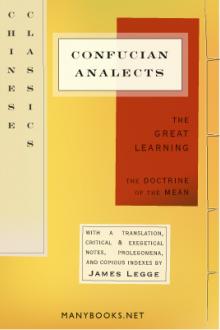Myths and Legends of China, E. Werner [best english novels for beginners TXT] 📗

- Author: E. Werner
Book online «Myths and Legends of China, E. Werner [best english novels for beginners TXT] 📗». Author E. Werner
The Cursed Temple
The reign of Ch’ung Chêng, the last monarch of the Ming dynasty, was much troubled both by internal broils and by wars. He was constantly threatened by Tartar hordes from without, though these were generally beaten back by the celebrated general Wu San-kuei, and the country was Page 399perpetually in a state of anarchy and confusion, being overrun by bands of marauding rebels; indeed, so bold did these become under a chief named Li Tzŭ-ch’êng that they actually marched on the capital with the avowed intention of placing their leader on the Dragon Throne. Ch’ung Chêng, on the reception of this startling news, with no one that he could trust in such an emergency (for Wu San-kuei was absent on an expedition against the Tartars), was at his wits’ end. The insurgents were almost in sight of Peking, and at any moment might arrive. Rebellion threatened in the city itself. If he went out boldly to attack the oncoming rebels his own troops might go over to the enemy, or deliver him into their hands; if he stayed in the city the people would naturally attribute it to pusillanimity, and probably open the gates to the rebels.
In this strait he resolved to go to the San Kuan Miao, an imperial temple situated near the Ch’ao-yang Mên, and inquire of the gods as to what he should do, and decide his fate by ‘drawing the slip.’ If he drew a long slip, this would be a good omen, and he would boldly march out to meet the rebels, confident of victory; if a middle length one, he would remain quietly in the palace and passively await whatever might happen; but if he should unfortunately draw a short one he would take his own life rather than suffer death at the hands of the rebels.
Upon arrival at the temple, in the presence of the high officers of his Court, the sacrifices were offered up, and the incense burnt, previous to drawing the slip on which hung the destiny of an empire, while Ch’ung Chêng himself remained on his knees in prayer. At the conclusion of the sacrificial ceremony the tube containing the bamboo fortune-telling sticks was placed in the Emperor’s hand Page 400by one of the priests. His courtiers and the attendant priests stood round in breathless suspense, watching him as he swayed the tube to and fro; at length one fell to the ground; there was dead silence as it was raised by a priest and handed to the Emperor. It was a short one! Dismay fell on every one present, no one daring to break the painful, horrible silence. After a pause the Emperor, with a cry of mingled rage and despair, dashed the slip to the ground, exclaiming: “May this temple built by my ancestors evermore be accursed! Henceforward may every suppliant be denied what he entreats, as I have been! Those who come in sorrow, may that sorrow be doubled; in happiness, may that happiness be changed to misery; in hope, may they meet despair; in health, sickness; in the pride of life and strength, death! I, Ch’ung Chêng, the last of the Mings, curse it!”
Without another word he retired, followed by his courtiers, proceeded at once to the palace, and went straight to the apartments of the Empress. The next morning he and his Empress were found suspended from a tree on Prospect Hill. “In their death they were not divided.” The scenes that followed; how the rebels took possession of the city and were driven out again by the Chinese general, assisted by the Tartars; how the Tartars finally succeeded in establishing the Manchu dynasty, are all matters of history. The words used by the Emperor at the temple were prophetic; he was the last of the Mings. The tree on which the monarch of a mighty Empire closed his career and brought the Ming dynasty to an end was ordered to be surrounded with chains; it still exists, and is still in chains. Upward of two hundred and seventy years have passed since that time, yet the temple is standing as of old; but the halls that at Page 401one time were crowded with worshippers are now silent, no one ever venturing to worship there; it is the resort of the fox and the bat, and people at night pass it shudderingly—“It is the cursed temple!”
The Maniac’s Mite
An interesting story is told of a lady named Ch’ên, who was a Buddhist nun celebrated for her virtue and austerity. Between the years 1628 and 1643 she left her nunnery near Wei-hai city and set out on a long journey for the purpose of collecting subscriptions for casting a new image of the Buddha. She wandered through Shantung and Chihli and finally reached Peking, and there—subscription-book in hand—she stationed herself at the great south gate in order to take toll from those who wished to lay up for themselves treasures in the Western Heaven. The first passer-by who took any notice of her was an amiable maniac. His dress was made of coloured shreds and patches, and his general appearance was wild and uncouth. “Whither away, nun?” he asked. She explained that she was collecting subscriptions for the casting of a great image of Buddha, and had come all the way from Shantung. “Throughout my life,” remarked the madman, “I was ever a generous giver.” So, taking the nun’s subscription-book, he headed a page with his own name (in very large characters) and the amount subscribed. The amount in question was two cash, equivalent to a small fraction of a farthing.





Comments (0)